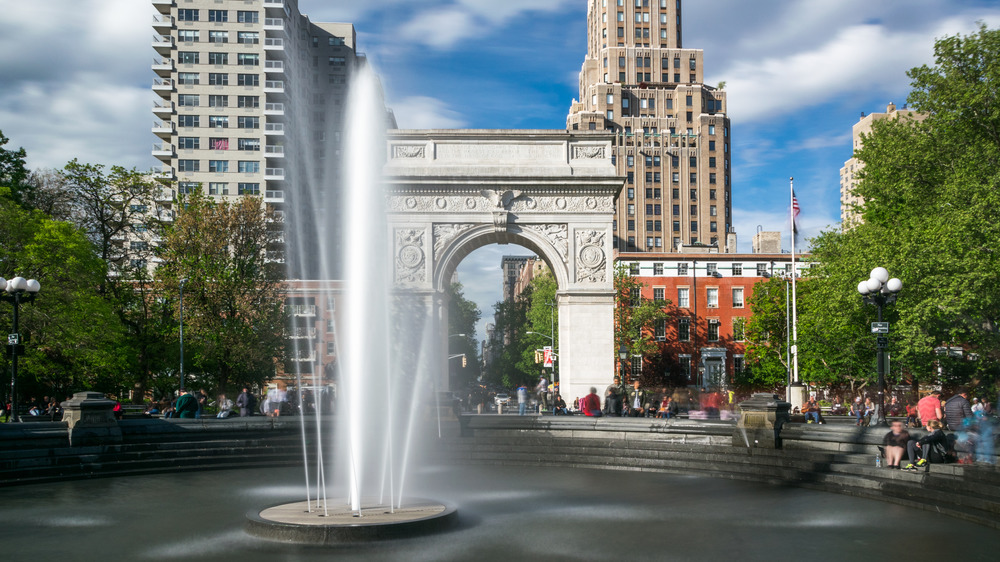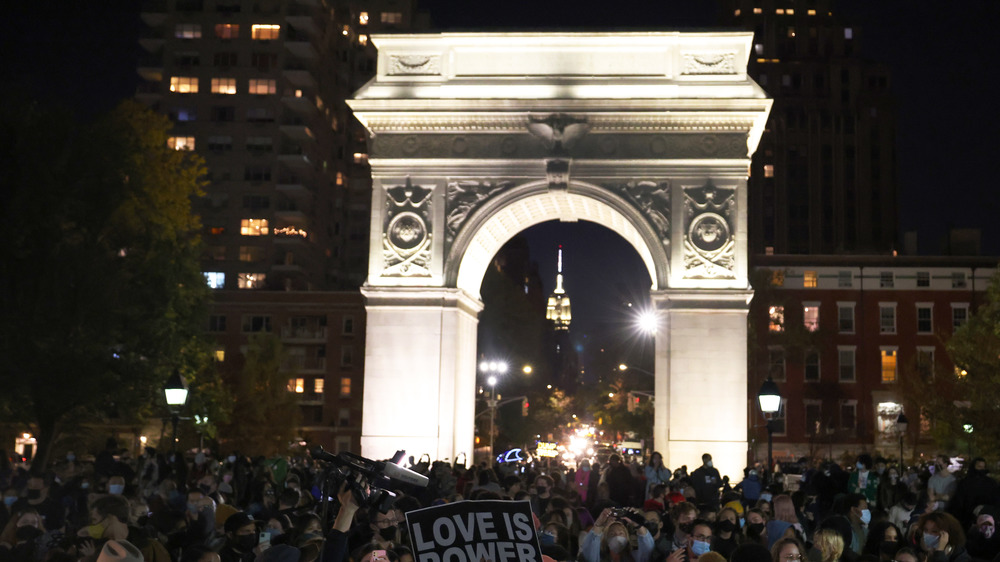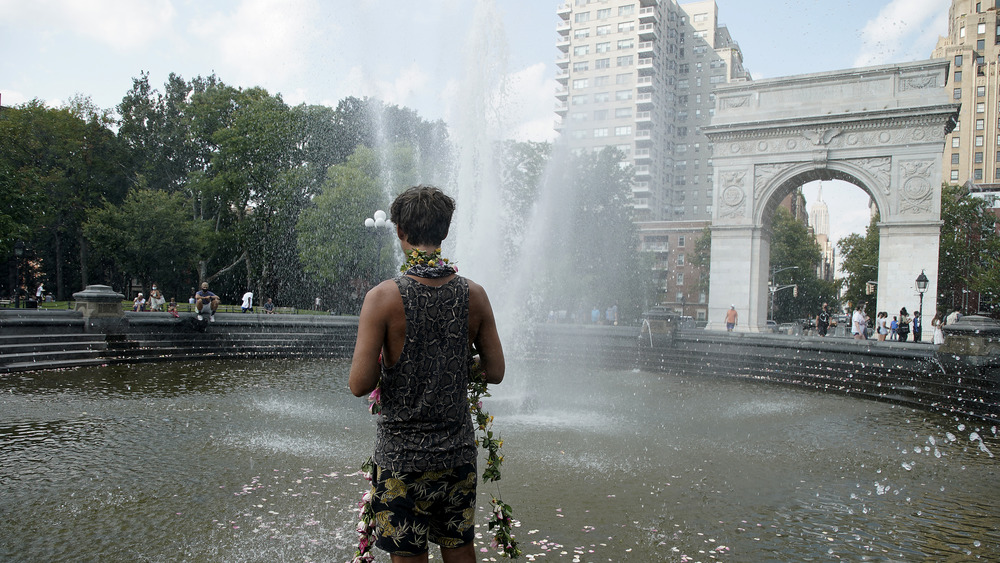The Dark Secret Beneath NYC's Washington Square
Washington Square Park in New York City is one of the most iconic places in a very iconic city. You've definitely seen its iconic arch and thought it was the one in Paris. The park is a place where a lot of people congregate: tourists, students from nearby New York University, and other locals. People have protested in the park, posed for graduation photos, watched skateboarders and swimmers in its huge fountain, and even picnicked on the grass.
But what most park visitors don't know is that Washington Square Park has a pretty macabre secret. It used to be a cemetery.
The area where Washington Square Park lies, the Greenwich Village neighborhood, was not always part of the city. The land used to be occupied by the Lenape tribe; they called the area Minetta, meaning long-buried, according to the Washington Square Park Conservancy website. When the Dutch West India Company established a trading post at the tip of Manhattan, they made a deal with their slaves: in exchange for a plot of land in Minetta and their freedom, they must sell a portion of their crops to settlers. The slaves were given their liberty but eventually lost their lands when New York was handed over to the British.
Minetta became one of the first predominantly Black neighborhoods in the city.
Over the years, the area called Minetta was passed down to English settlers and was incorporated into estates. Though not officially part of what was then considered New York City, the land was eventually purchased by the municipality.
People protested against the Washington Square Park cemetery
In April 1797, New York was looking for a replacement for the public burial site in what is now Madison Square Park. According to the New York Cemetery Project blog, officials chose the site because it was outside the city but still a reasonable distance from a homeless shelter and Bellevue Hospital.
However, several prominent New Yorkers protested. Many, including Alexander Hamilton, had bought country homes in the area. They asked city officials to reconsider, saying their families could get sick if they lived near a potter's field. Their petition was denied, and the city set up the burial grounds in the area containing what is now Washington Square Park. It was a large area, explained Untapped New York, about six and a half acres.
As a potter's field, the new cemetery would serve as the burial place for poor people and those who worked in brothels, often in unmarked and/or shared graves. Later on, during New York's yellow fever epidemics of the 18th and 19th centuries, many of the afflicted were buried there. About 2,000 New Yorkers died of yellow fever, and 660 of them were interred in the park. When the African Zion Methodist Church ran out of room in its graveyards, hundreds of its members were laid to rest there too.
By the 1820s, about 20,000 bodies had been interred in the potter's field. The area, though, changed a lot since the burial grounds were first used; it had become a thriving suburb and was made part of the city.
Washington Square: From cemetery to parade grounds to park
The park was not only a potter's field, it also served as an execution site. It had gallows in the center, where the iconic fountain is now, and a hangman's tree nearby. The bodies of those who were put to death were also buried in the park.
By 1824, the city determined the potter's field was full and voted to close it. In 1825, it was leveled and filled. So, now, the city had six and a half acres of land to do with as it pleased. Officials decided to transform it into a parade grounds and, on July 4, 1826, the Washington Parade Grounds was officially opened. A few years later, the parade grounds became a public park.
Today, Washington Square Park is the center of a bustling neighborhood. The area has also gone through several iterations. Greenwich Village used to be an artist's enclave and a rich person's playground.
As for the park itself, the parks department doesn't shy away from talking about its dark past. Several walking tours focusing on ghosts and the park's more horrific history wind their ways around Washington Square Park and the nearby site of the former Triangle Shirtwaist Factory. Park visitors can rest assured, though, even if they hang out in a different park in the city, might still have been a potter's field or other cemetery at some point.


